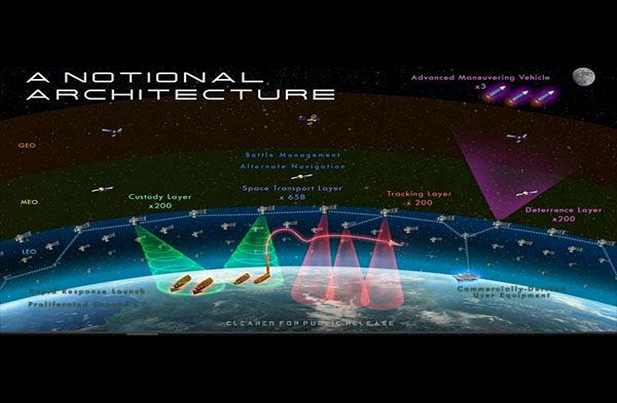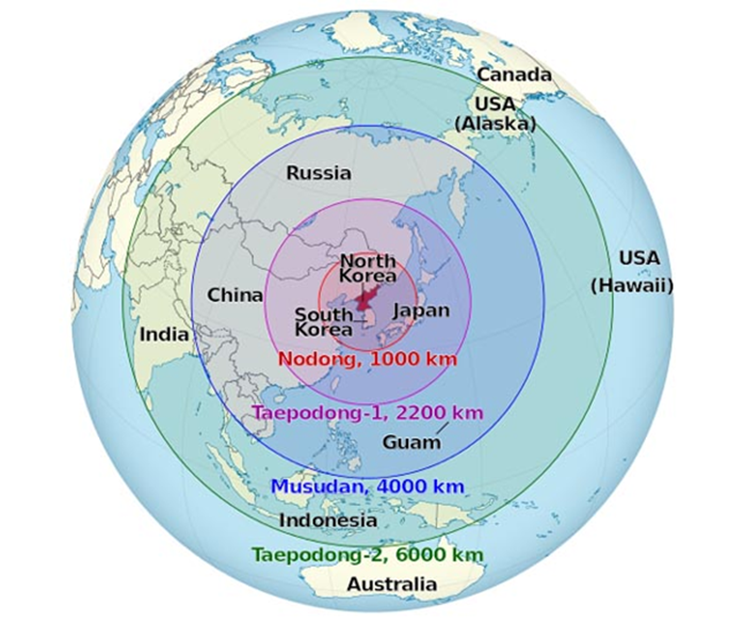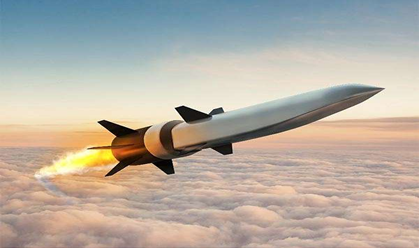TX030 極超音速(Super Sonic)の防衛対策について
今回は久しぶりにGoodニュース情報をお伝え出来ます。持続的な防衛力、攻撃力を持てない国も、進化を続ける近代兵器の脅威に対して、依存度、信頼度の高い抑止力テクノロジーを共有できるかもしれないというような気がしてきました。単一テクノロジーの実用化ではなく、探知能力と迎撃ミサイルの発射を確実にする為の全般的なインフラストラクチャーを形成する、沢山のテクノロジーの統合が必要とされてきましたが、2021年代にはいり、多くのコラボレーションが成立してきた為、今後10年以内に実現の可能性があると思われます。
Global missile defense from space got more affordable
by Staff Writers
Washington DC (SPX) Sep 28, 2021
米国防総省は、10年以内に、低軌道衛星のメッシュネットワーク(相互にリンクされ、戦闘機にリンクされている)が、ミサイルの脅威に対して、グローバル・リアルタイム・認知能力と脅威への対応能力を備えることを望んでいます。
宇宙開発庁の局長(Derek M. Tournear)は、 “今までは、目標を達成するには、法外な費用がかかると考えられていた” と、 “State of the Space Force“と題したパネルディスカッションで述べています。それは、一つのサテライトを打ち上げるのに 数億ドルを必要としてきた事が主な原因となってきていたからです。彼は、そして、”今は、民営化された商業宇宙産業のお蔭で、その目標を達成する為に必要とする予算は、かなり手ごろなものにたってきている“と追加しています。
宇宙事業が商業化してきたことにより、こうした目標を達成する為の価格を下げました。 「現在、20台の輸送衛星を、1台あたり約14.1百万ドルで、固定価格契約を結んでいる」さらに、「それは前代未聞であり、商業化が価格を押し下げ続けているので、価格は下がり続けると私たちは信じています。」と彼はそのパネルな中で述べています。
それ(サテライト打ち上げ価格)はその一部に過ぎないと彼は付け加え、宇宙へのアクセス事業そのものが、商品化されてきているために、商業産業は衛星を軌道に乗せるための価格を下げ続けるだろうと感想を述べました。数年前の打ち上げは数億ドルでしたが、現在は数千万ドルであり、この価格体系は、国防総省がスパイラル開発に必要とする何千もの衛星を打ち上げるケースでは、大きな違いとなって表れてきます。

スペースベースのアーキテクチャの最終的な目標は、たとえば、極超音速グライドビークル(敵のミサイル)を、発見し、追跡し、射撃統制ソリューションを計算し、それを迎撃ミサイルに直接送信して指示し、その脅威を傍受して破壊してしまうことです。 これらは、私達が、長い間やり遂げようとしてきたミッション使命です
Tournear(局長)は、米国の諸々の防衛機関、例えば、ミサイル防衛局(MDA)、空軍研究所(AFRL)、国防高等研究計画局(DARPA)と、防衛産業界パートナーが、この取り組みで、各々の役割を果たしていることに言及しました。また、Defense Oneのテクノロジーエディター、Patrick Tucker氏は、コンポーネントを3D印刷技術で生み出せるようになったこと、そして、ソフトウェア開発の技術革新が速度を増したことを、コストダウンの要因だと述べています。タッカー氏はまた、皮肉にも、中国とロシアも米国と同じ技術と利点を利用できると指摘しています。
下記のニュースは、北朝鮮のミサイル兵器のテストに関するものです。バイデン政権になって、米国への威信を意識しなくなった北朝鮮の指導者が、最近頻繁に短距離、中距離ミサイルの実用化試験をしています。どんなミサイルが、どんな性能を持っているのか、上述のグローバルミサイル防御システムの記事と合わせてご一読ください。North Koreaがテストと称して発射を繰り返している行為の背景はともかく、このテストで、技術者たちは、ミサイルのスピード、飛距離、正確性、破壊力等を確認しているものです。上記のようなグローバルシステムを、日本も米国にお願いして近い将来、共同配備できれば、安心材料の一つになるといったところではないでしょうか。
North Korea fires ‘missile’, insists on right to weapons tests
By Claire LEE
Seoul (AFP) Sept 28, 2021

Nuclear-armed North Korea fired a presumed short-range missile into the sea on Tuesday, the South’s military said, as Pyongyang’s UN ambassador insisted it had an undeniable right to test its weapons.
The projectile was fired from the northern province of Jagang into waters off the east coast, according to South Korea’s Joint Chiefs of Staff, and a Japanese defence ministry spokesman told AFP it “appears to be a ballistic missile”.
Less than an hour later, Pyongyang’s United Nations ambassador Kim Song told the UN General Assembly in New York: “Nobody can deny the right to self-defence for the DPRK”, North Korea’s official name.
It was the latest in a series of mixed messages from Pyongyang, coming days after leader Kim Jong Un’s influential sister Kim Yo Jong, a key adviser to her brother, dangled the prospect of an inter-Korean summit.
But she insisted that “impartiality” and mutual respect would be required, calling for South Korea to “stop spouting an impudent remark”.
She condemned as “double standards” South Korean and US criticism of the North’s military developments, while the allies build up their own capacities.
Washington condemned the latest launch, with the State Department calling it a threat to North Korea’s neighbours and the international community, and a “violation of multiple UN Security Council Resolutions”.
In recent days, South Korean President Moon Jae-in, who has only months left in office, reiterated at the UN General Assembly his longstanding calls for a formal declaration of an end to the Korean War.
The North invaded the South in 1950 and hostilities ceased three years later with an armistice rather than a peace treaty, leaving them technically still in a state of conflict.
Pyongyang is under multiple sets of international sanctions over its banned programmes to develop nuclear weapons and ballistic missiles.
In his own General Assembly speech, ambassador Kim Song said North Korea had a right to “develop, test, manufacture and possess” weapons systems equivalent to those of the South and its US ally.
“We are just building up our national defence in order to defend ourselves and reliably safeguard the security and peace of the country,” he said.
– ‘Heinous human rights abuser’ –
Pyongyang has already carried out several missile launches this month, one involving long-range cruise missiles and another that the South Korean military said was of short-range ballistic missiles.
Seoul also successfully test-fired a submarine-launched ballistic missile (SLBM) for the first time, making it one of a handful of nations with the advanced technology.
On Tuesday, it launched its third SLBM submarine as it spends billions to strengthen its military capabilities.
Talks between Pyongyang and Washington have been largely at a standstill since a 2019 summit in Hanoi between leader Kim and then-president Donald Trump collapsed over sanctions relief and what North Korea would be willing to give up in return.
The North has since then repeatedly excoriated the South and its president Moon, and blown up a liaison office on its side of the border that Seoul had built.
After an emergency meeting, the South’s National Security Committee issued a statement Tuesday saying it “expressed regret for the launch at a time when political stability on the Korean Peninsula is very critical”.
Yang Moo-jin, a professor at the University of North Korean Studies, told AFP: “It looks like North Korea wants to see how genuine Seoul is when it comes to its willingness to improve inter-Korean ties — and to officially end the Korean War.”
“Pyongyang will monitor and study Moon’s reaction after today’s launch and decide on what they want to do on things such as restoring the inter-Korean hotline.”
Washington stations around 28,500 troops in South Korea to defend it against its neighbour and protect US interests in northeast Asia.
The administration of US President Joe Biden has repeatedly said that it is willing to meet North Korean officials anywhere, at any time, without preconditions, in its efforts to seek denuclearisation.
But the North has not shown any willingness to give up its arsenal, which it says it needs to defend itself against a US invasion.
On Monday, the North’s official Korean Central News Agency carried an article calling the United States “the most heinous human rights abuser in the world” for its sanctions policies on various countries.
The North was also due to open a session of its rubber-stamp parliament, the Supreme People’s Assembly, on Tuesday.
関連情報に興味のあるかたは下記のアドレスにアクセスしてください:
Learn about nuclear weapons doctrine and defense at SpaceWar.com
Learn about missile defense at SpaceWar.com
All about missiles at SpaceWar.com
Learn about the Superpowers of the 21st Century at SpaceWar.com
ミサイル防衛関連情報⁻2
上記グローバルミサイル防衛の解説に出てきたように、英米露は、Hypersonic Air-breathing Weapon(極超音速航空兵器)開発に拍車をかけてきています。この方面での技術革新は、ロシアが先行してきた感がありましたが、一昨年からおDARPA資金をベースにした研究プロジェクトでずいぶん巻き返してきたという印象を受けます。DARPAが開発を急ぐ新兵器とは、下記の記事をご一読ください。
DARPA’S Hypersonic Air-breathing Weapon Concept achieves successful flight
by Staff Writers
Washington DC (SPX) Sep 28, 2021
The HAWC flight test data will help validate affordable system designs and manufacturing approaches that will field air-breathing hypersonic missiles to our warfighters in the near future.

DARPA, in partnership with the U.S. Air Force, completed a free flight test of its Hypersonic Air-breathing Weapon Concept (HAWC) last week. The missile, built by Raytheon Technologies, was released from an aircraft seconds before its Northrop Grumman scramjet (supersonic combustion ramjet) engine kicked on. The engine compressed incoming air mixed with its hydrocarbon fuel and began igniting that fast-moving airflow mixture, propelling the cruiser at a speed greater than Mach 5 (five times the speed of sound).
The HAWC vehicle operates best in oxygen-rich atmosphere, where speed and maneuverability make it difficult to detect in a timely way. It could strike targets much more quickly than subsonic missiles and has significant kinetic energy even without high explosives.
“The HAWC free flight test was a successful demonstration of the capabilities that will make hypersonic cruise missiles a highly effective tool for our warfighters,” said Andrew “Tippy” Knoedler, HAWC program manager in DARPA’s Tactical Technology Office. “This brings us one step closer to transitioning HAWC to a program of record that offers next generation capability to the U.S military.”
Goals of the mission were: vehicle integration and release sequence, safe separation from the launch aircraft, booster ignition and boost, booster separation and engine ignition, and cruise. All primary test objectives were met.
The achievement builds on pioneering scramjet projects, including work on the X-30 National Aero-Space Plane as well as unmanned flights of NASA’s X-43 vehicles and the U.S. Air Force’s X-51 Waverider.
“HAWC’s successful free flight test is the culmination of years of successful government and industry partnership, where a single, purpose-driven team accomplished an extremely challenging goal through intense collaboration,” Knoedler added. “This historic flight would not have been possible without the dedication of industry, U.S. Air Force, and Navy flight test personnel who persevered through the pandemic to make the magic happen.”
The HAWC flight test data will help validate affordable system designs and manufacturing approaches that will field air-breathing hypersonic missiles to our warfighters soon.
Best regards,
Shoichi Sugiyama, Ph.D.

